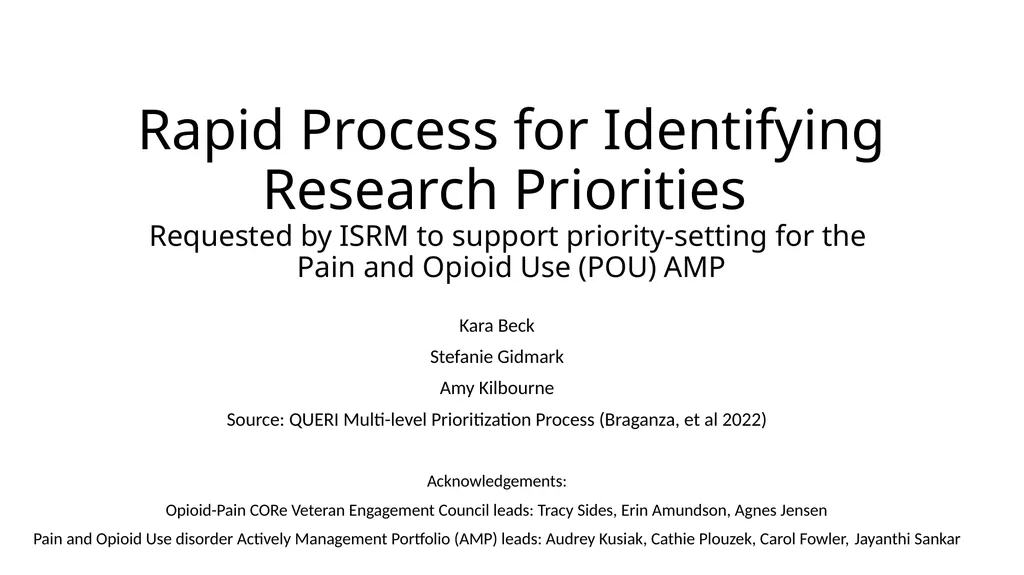
Rapid Process for Identifying Research Priorities
Author: danika-pritchard | Published: 2025-08-04
Description: Rapid Process for Identifying Research Priorities Requested by ISRM to support priority-setting for the Pain and Opioid Use (POU) AMP Kara Beck Stefanie Gidmark Amy Kilbourne Source: QUERI Multi-level Prioritization Process (Braganza, et al
Download Presentation
Download the PPT/PDF: Download
Transcript:
Loading transcript…